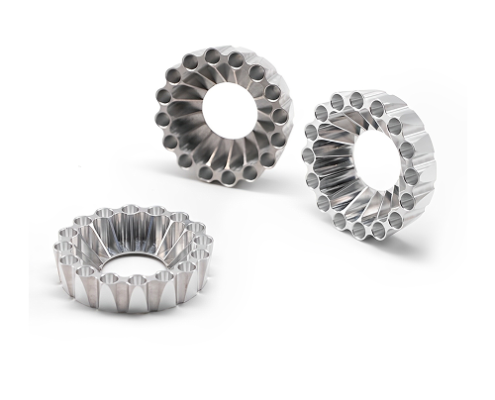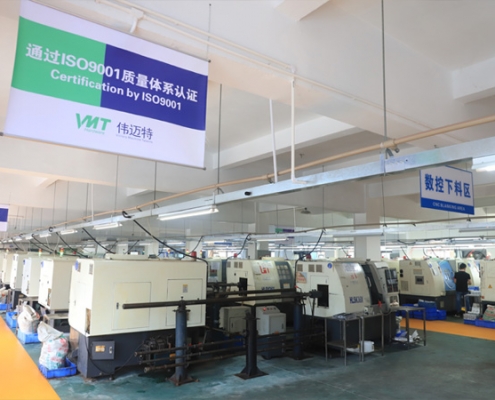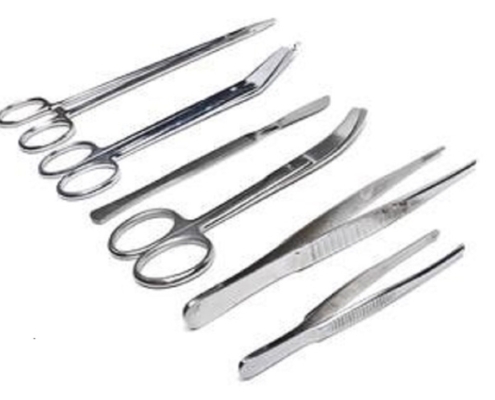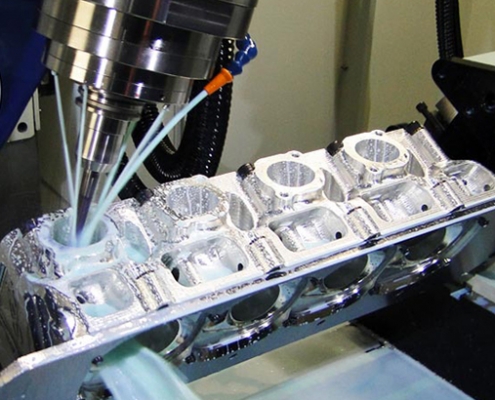Medical CNC Machining: Process, Benefits & Applications
Medical devices require exceptional accuracy and reliability—without it, lives are at stake. Poorly machined parts can lead to malfunction, risking both safety and reputation.
Medical CNC machining involves using computer-controlled tools to manufacture complex, high-tolerance parts used in the healthcare industry. From surgical instruments to implantable devices, it guarantees consistent accuracy and finish.
Let’s explore the full potential of CNC machining in medical device manufacturing below.
What Is CNC Machining in the Medical Industry?
CNC machining for medical devices refers to the use of high-precision computer numerical control systems to create parts used in medical applications. This process covers milling, turning, and other subtractive methods to achieve detailed geometries.
CNC machining medical components ensures the reproducibility, cleanliness, and tolerance required in critical medical use cases.
Whether it’s medical CNC turning for titanium bone screws or CNC machined pharmaceutical parts, this method is integral to the modern medical supply chain.

The Importance of Precision in Medical Devices
Every fraction of a millimeter matters in the creation of medical devices. Precision machining ensures that surgical tools operate with consistent reliability, implants fit seamlessly within the human body, and diagnostic equipment delivers accurate results. The complexity of medical procedures and the sensitivity of the human body demand manufacturing processes that leave no room for error.
Take pacemaker housings and orthopedic screws, for example. These components must meet incredibly tight tolerances to function properly within the body. Pacemaker enclosures protect delicate electronics that regulate heart rhythms, while orthopedic screws secure bones or implants, supporting the body’s healing process. Even a microscopic deviation can lead to failure, jeopardizing patient safety and outcomes.
In fact, a difference as small as 0.01 mm can be critical—impacting the success of surgeries, the longevity of implants, and the accuracy of diagnoses. This level of precision is not just a technical requirement; it is a cornerstone of trust in medical technology.
Medical CNC Machining Processes
The manufacturing of medical devices requires specialized CNC machining processes to meet the industry’s exacting standards. Depending on the complexity, material, and application of the component, different techniques are utilized to achieve precision and reliability. Below are some of the most commonly used medical CNC machining processes:
CNC Milling
CNC milling involves cutting material along multiple axes to create complex geometries and intricate designs. This process is highly versatile, making it suitable for a wide range of medical components, such as bone plates and device housings. With the ability to work on a variety of materials, CNC milling ensures precision and consistency across components, even for complex shapes.
CNC Turning
In CNC turning, the material is rotated while a cutting tool shapes it into the desired form. This technique is ideal for producing cylindrical parts with high accuracy, such as bone screws, pins, and connectors. CNC turning is often used in applications where rotational symmetry and smooth finishes are critical.

Swiss Machining
Swiss machining is a highly precise turning process that excels in producing small, intricate components. This technique is particularly effective for micro-sized parts, such as catheter tips, surgical screws, and miniature connectors. With exceptional accuracy and productivity, Swiss machining is a go-to method for high-volume production of complex medical components.
Electrical Discharge Machining
EDM utilizes electrical discharges to shape hard-to-machine metals like titanium and cobalt-chromium alloys. This process is indispensable for creating implants, surgical tools, and other components requiring exceptional detail and tight tolerances. EDM can produce intricate geometries that are difficult or impossible to achieve with traditional machining methods.
Laser Cutting and Engraving
Laser processes are commonly employed for cutting, engraving, and marking medical components. They are particularly useful for creating fine features, such as identification markings or intricate patterns on surgical tools and implants. Laser machining ensures precision while maintaining the integrity of the material.
Common Materials Used in Medical CNC Machining
Materials used in medical CNC machining must meet strict biocompatibility, durability, and sterilization requirements. Each material is selected for its specific properties, ensuring reliability in various medical applications. Below is an overview of commonly used materials:
| Material | Use Case | Properties |
|---|---|---|
| Titanium | Implants, surgical instruments | Lightweight, corrosion-resistant, high strength-to-weight ratio |
| Stainless Steel | Tools, fasteners, surgical parts | Strong, sterilizable, cost-effective, wear-resistant |
| PEEK | Spinal implants, dental devices | High-temperature resistance, biocompatibility, radiolucency |
| PTFE | Catheters, fittings | Excellent chemical resistance, low friction, non-reactive |
| Aluminum | Diagnostic equipment, instrument housings | Lightweight, excellent machinability, cost-effective |
| Copper | Electrical components, heat exchangers | Excellent electrical and thermal conductivity, antimicrobial properties |
| Brass | Fittings, connectors, decorative surgical tools | Corrosion-resistant, easy to machine, antimicrobial properties |
Benefits of CNC Machining in the Medical Industry
CNC machining has revolutionized medical manufacturing, offering unparalleled precision and reliability. This technology plays a crucial role in meeting the rigorous demands of the healthcare sector.
Extremely Tight Tolerances
CNC machines can achieve tolerances as tight as 0.001 mm, ensuring the accuracy and consistency required for critical medical components. This level of precision is essential for implants, surgical tools, and diagnostic devices, where even the smallest error can have significant consequences for patient safety and treatment outcomes.
Customization for Unique Patient Cases
With CNC machining, medical components can be customized to meet the specific needs of individual patients. This is particularly important for implants and prosthetics, where tailored solutions improve fit, comfort, and functionality. CNC technology enables rapid adjustments to designs, making personalized medicine a practical reality.
Rapid Prototyping and Production
CNC machining allows for quick transitions from design to prototype and from prototype to production. This accelerates the development of new medical devices, enabling faster time-to-market for innovative solutions. Additionally, CNC machines excel in producing both small and large batches, making them ideal for high-mix, low-volume production.
Compliance with Industry Standards
CNC machining supports compliance with strict regulatory standards, such as ISO 13485 and FDA requirements. This ensures that medical devices are manufactured to the highest levels of quality and safety. By leveraging CNC technology, manufacturers can consistently meet these regulations while maintaining efficiency and reliability.
Enhanced Material Versatility
CNC machining works with a wide range of materials, from metals like titanium and stainless steel to advanced plastics like PEEK and PTFE. This versatility makes it possible to produce components that meet diverse functional and biocompatibility requirements, expanding the scope of medical applications.
Challenges and Solutions with CNC Machining Medical Devices
Below is the key challenges in CNC machining medical devices and the corresponding solutions employed to address them:
| Challenges | Description | Solutions |
|---|---|---|
| Extreme Tolerance Requirements | Medical components often require tolerances as tight as 0.001 mm to ensure reliability and functionality. | Utilization of advanced precision CNC machines and quality control processes like CMM inspections. |
| Material Compliance and Sourcing | Finding biocompatible materials that meet strict industry standards can be difficult and expensive. | Partnering with certified suppliers and selecting materials proven to comply with ISO 10993 and FDA guidelines. |
| Surface Finish Needs | Many medical components require smooth, sterilization-ready finishes to prevent bacterial adhesion. | Implementation of specialized finishing techniques such as polishing, bead blasting, or anodizing. |
| Regulatory Certifications | Ensuring compliance with standards like ISO 13485 and FDA regulations is complex and time-consuming. | Maintaining detailed documentation, conducting audits, and using CAD/CAM verification for consistency. |
| Traceability Requirements | Ensuring full traceability of components and materials is critical for regulatory and safety purposes. | Adoption of serialized tracking, barcoding, and maintaining comprehensive records for each production run. |
Applications of Medical CNC Machining
CNC machining plays a crucial role in the production of medical devices, enabling the creation of highly precise, reliable components for a wide range of applications. Below are some key examples of medical CNC machined parts and their uses:
Orthopedic Screws and Plates
Orthopedic screws and plates are critical for stabilizing bones during the healing process after fractures or surgeries. CNC machining ensures these components are manufactured to exact specifications, with tight tolerances that allow for secure fixation. Materials like titanium or stainless steel are often used for their strength and biocompatibility.
Surgical Scissors and Forceps
Surgical scissors and forceps are essential tools in almost every type of surgery. CNC machining allows for the production of sharp, durable, and ergonomically designed tools that meet the stringent requirements for precision. The use of high-quality materials ensures these instruments can withstand repeated sterilization cycles without degradation.

Endoscopic Device Components
Endoscopic procedures require precise, small, and intricate components. CNC machining is commonly used to create parts such as endoscope housings, lenses, and tips. These components must be lightweight, durable, and capable of withstanding sterilization while maintaining their functionality in highly specialized medical environments.
Implantable Bone Fixtures
Bone fixtures like plates, screws, and pins are designed to be implanted into the body to secure bones during healing or to support joints. CNC machining is used to create these devices with the utmost precision to ensure they fit perfectly and function properly within the body. The machining process also guarantees that the implants are made from biocompatible materials that won’t cause adverse reactions.
Diagnostic Equipment Housing
CNC machining is widely used in the production of housings for diagnostic equipment such as MRI machines, CT scanners, and ultrasound devices. These housings are made from materials that protect sensitive electronics while being easy to sterilize and durable enough to endure continuous use in healthcare settings.
Custom Implants and Prosthetics
CNC machining is increasingly used to produce custom implants and prosthetics tailored to the unique anatomy of individual patients. This includes everything from custom knee or hip replacements to dental implants. Precision machining ensures a perfect fit, improving patient outcomes and comfort.
Dental Tools and Components
CNC machining plays an integral role in the production of dental tools and components, such as crowns, bridges, and dentures. The ability to machine these parts with high precision allows for better fitting and more effective dental solutions.
Medical CNC Machining: VMT Provides Your Solutions
VMT specializes in providing high-precision CNC machining solutions for the medical industry. With over 15 years of engineering expertise, VMT offers advanced 5-axis machining to create complex geometries and components with tolerances as tight as 0.01 mm, supported by ISO 9001 and IATF 16949 certifications. Whether you require medical CNC equipment or custom machined parts, VMT delivers reliable and precise solutions tailored to your needs.

In Conclusion
Medical CNC machining ensures that life-saving devices meet the strictest industry standards by delivering unmatched precision, customization, and speed. It allows for the creation of complex, high-quality components with tight tolerances, ensuring optimal performance and safety. With its ability to produce both standard and custom parts, CNC machining plays a vital role in enhancing patient outcomes.
Frequently Asked Questions
What is the Difference Between CNC and Machining?
CNC refers to automated control of machine tools using computers. Machining is the broad process of shaping materials using tools. So, CNC is a modern method of machining that improves precision, while traditional machining can be manual or semi-automated.
Why is CNC Machining Preferred for Medical Device Production?
CNC machining for medical devices offers unmatched precision, repeatability, and compatibility with strict regulatory standards. It’s ideal for complex geometries and ensures each part meets tight tolerances essential for patient safety.



